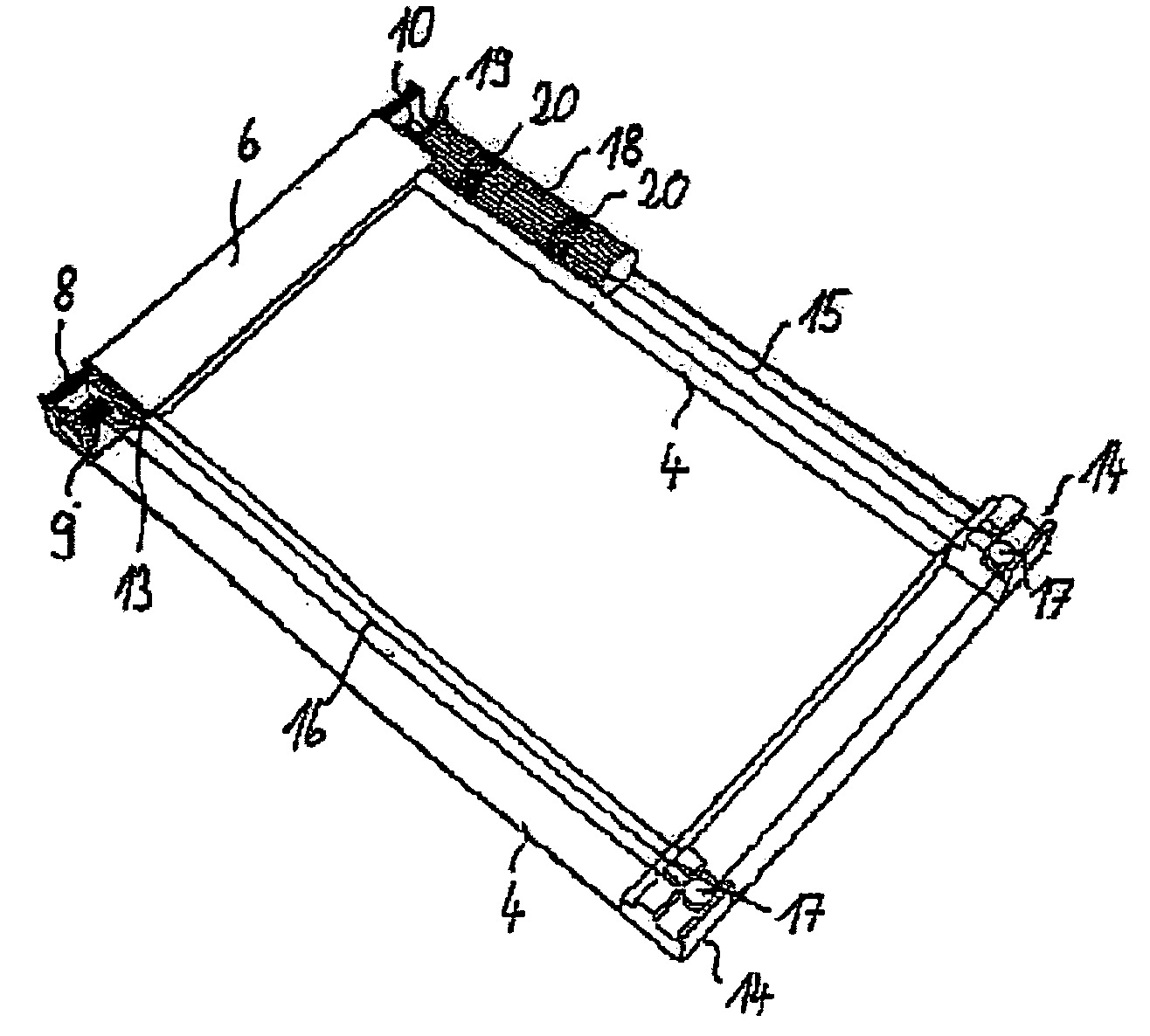Roller blind device
a technology of roller blinds and rollers, which is applied in the direction of curtain suspension devices, curtain accessories, building components, etc., can solve the problems of blinds that require a significant amount of force for operation, snap upward, and unfavorable operation
- Summary
- Abstract
- Description
- Claims
- Application Information
AI Technical Summary
Problems solved by technology
Method used
Image
Examples
Embodiment Construction
[0027]FIG. 1 shows a frame 2 into which a roller blind device in accordance with the invention is integrated. Frame 2 consists of lower frame part 4 and upper frame part 5. Furthermore, guide slot 3 can be recognized. Frame 2 preferably consists of sheet-metal profiles or plastic profiles formed in such a manner that after assembly they enclose the mechanism, shown in the following in detail. Guide slot 3, in which the fabric and the pull rod move in a guided fashion, remains on the inside of frame 2.
[0028]FIG. 2 shows the arrangement shown in FIG. 1 without upper frame part 5, as a result of which part of the mechanism becomes visible. Fabric 6 used for shading is wound onto a fabric shaft and diverted once over diverter shaft 8. Cord reel 9 and bevel gear 10 are connected to the fabric shaft in such a manner that they rotate in unison with it. The fabric shaft is clipped into clip holders 11 that hold frame parts 4, 5 together at the same time. Pull rod 12 is connected to the end...
PUM
 Login to View More
Login to View More Abstract
Description
Claims
Application Information
 Login to View More
Login to View More - R&D
- Intellectual Property
- Life Sciences
- Materials
- Tech Scout
- Unparalleled Data Quality
- Higher Quality Content
- 60% Fewer Hallucinations
Browse by: Latest US Patents, China's latest patents, Technical Efficacy Thesaurus, Application Domain, Technology Topic, Popular Technical Reports.
© 2025 PatSnap. All rights reserved.Legal|Privacy policy|Modern Slavery Act Transparency Statement|Sitemap|About US| Contact US: help@patsnap.com



